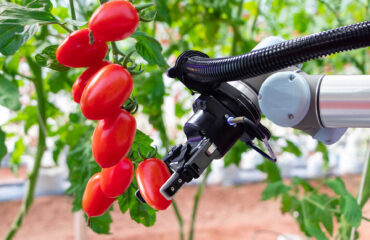Vital Technology Insights for Agriculture Companies
Digital technologies combined with agriculture industry knowledge create fresh perspectives for farmers. Get vital insights on improving farming profitability and boosting yield collected in the comprehensive blogs by Intellias.
Recent blog postsTotal Posts: 27

AgricultureAI & ML
Achieve New Levels of Performance with Generative AI In Agriculture
July 01, 20259 mins read

Agriculture
Farm Automation: Shaping the Future of Agriculture
June 17, 20259 mins read
by Alina Piddubna

AgricultureDigital Transformation
Smart Farming: What Is the Future of Sustainable Agriculture?
April 04, 202510 mins read
by Alina Piddubna

AgricultureInternet of ThingsLocation-based services
GPS in Agriculture: Revolutionizing Farming Methods
May 13, 20247 mins read
by Alina Piddubna

AgricultureAI & ML
Intelligent Spraying in Agriculture for Precise Herbicide Application
January 30, 20247 mins read
by Alina Piddubna

AgricultureAI & MLData & AnalyticsInternet of Things
Digital Twins in Agriculture: A Time Machine for Your Farm
January 23, 202413 mins read
by Alina Piddubna

AgricultureSupply Chain
How Technology Can Solve Agriculture Supply Chain Problems
October 26, 20239 mins read
by Alina Piddubna

Agriculture
Reaping the Fruits of Vertical Farming Technology to Maximize Yields
November 23, 20227 mins read
by Alina Piddubna

Agriculture
Sustainable Livestock Farming: A Guide to Efficient Management
August 08, 20225 mins read
by Alina Piddubna
View more posts
